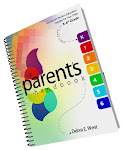Howard Gardner's Multiple Intelligences: Part 3
Below is part 3 of the article on Howard Gardner's Multiple Intelligences written by Thomas R. Hoerr, Ph.D. Makes sure you read the entire article to get all the information. I will be posting parts of the article this week.
While understanding your child's style helps you speak to his strengths, it is also important to give him opportunities to strengthen his weaknesses: Even if you're sure your child is a linguistic learner, there is plenty to be gained from engaging him in spatial or musical experiences. Here's a look at lingusistic, logical-mathematicial, and body-kinesthetic intelligences and the types of activities and experiences children tend to excel at with that learning style:
Linguistic
What it is: Sensitivity to the meaning and order of words. These children use an expanded vocabulary and usually like to tell jokes, riddles or puns. They also like to read, write, tell stories and play word games.
A good way to engage a language-oriented child in a home science experiment, for example, is to encourage him to describe and record exactly what he is doing and observing. To help him understand a concept such as counting, ask him to create a story in which a character has to count many items. Have paper, writing material, different types of storybooks, and a tape recorder handy.
Logical-mathematical
What it is: The ability to handle chains of reasoning and to recognize patterns and order. These learners enjoy working with numbers, want to know how things work, ask lots of questions, and collect items and keep track of their collections.
To interest a logical-mathematical learner in a picture book, have her sort and classify the different items or animals she sees in it. Asking her to compare the different sounds and tones various instruments can make is a good way to help her explore musical concepts. Good items to have on hand include puzzles, blocks and small manipulatives to count with.
Bodily-kinesthetic
What it is: The ability to use the body skillfully and to handle objects adroitly. Kinesthetic learners enjoy sports and love to be physically active. They tend to use body language, dance, act or engage in miKids with this intelligence tend to learn well through movement games and dramatizing scenes and situations.
Playing a game of hopscotch will help your physical learner grasp math concepts more easily than counting items. A good science experiment for a bodily-kinesthetic child is to compare how far he can throw different types of objects. Try to have dress-up clothes and props for role-playing, bean bags, and other age-appropriate sports equipment around the house.










0 comments:
Post a Comment